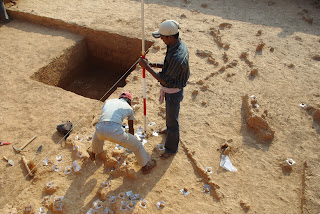Congratulations to Dorian Fuller, Nicky Boivin, Tom Hoogervorst and Robin Allaby who have won this year's Ben Cullen Prize, awarded to the runner up for best contribution to the journal, Antiquity.
Every year Antiquity awards prizes for the best article they have published. The Ben Cullen prize was set up in memory a bright young scholar at Cambridge, who died all too young. Here is the title and abstract. Click below to see the article.
Across the Indian Ocean: the prehistoric
movement of plants and animals
Dorian Q Fuller, Nicole Boivin, Tom Hoogervorst, Robin Allaby
 |
| Schematic map of major Bronze Age translocations |
For the article, click here













